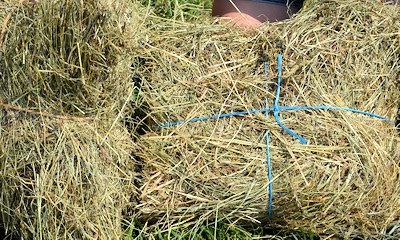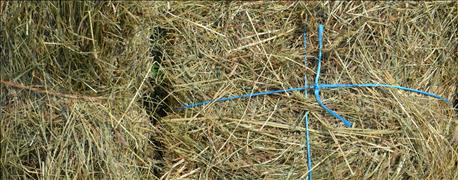
You could have cattle or sheep in the lactations stage, or else they will be soon. That’s often when you want to give them the best hay you can. Some years the second cutting often taken in mid-to-late June may fill the bill. That may not work this year. Chris Parker says even if you’ve never tested hay before, you ought to test what you have left now so you know how to supplement it during the rest of the winter.
Parker, retired Extension educator for Morgan County, writes Forage Notes in Indiana Prairie Farmer and also is a columnist for Profit Planners. Here are four big reasons why he suspects hay made mid-season in 2015 may not deliver the nutritional punch you normally see.
 CHECK YOUR HAY: Chris Parker, retired Extension educator, says the 2015 season was not good for making quality feed.
CHECK YOUR HAY: Chris Parker, retired Extension educator, says the 2015 season was not good for making quality feed.
1. There is very little quality second cutting in the first place!
Some people took a first cutting in late May. Rains in June and through early July wiped out the opportunity to take a second cutting in a timely fashion. It was mid-to-late July before many people could cut again, Parker says. Alfalfa that should have been cut in 35 days may have not been cut for 70 days. And in some cases where a first cutting wasn’t made before it started raining, especially with grass hay, the first cutting may have been in mid-July!
2. Fiber content will be way up on hay cut when it was very mature.
If you’re used to having alfalfa hay with 25% or less fiber content to feed to lactating animals or cows producing milk this time of year, fiber content could be as high as 35%. The longer alfalfa, or grasses for that matter, stands before cutting, and the more mature the plant, the more fiber it contains. If you’re feeding non-lactating animals, it may not be so critical, Parker says. But with lactating animals, more fiber usually means less energy.
Related: 10 Hay Farming Basics: Producing a quality hay product
3. Protein level may be lower than you expect
Good alfalfa hay can test from 16 to even 20% or higher in protein on a dry matter basis. Typically, the earlier hay is cut, the higher the protein content, Parker says. For example, if you cut alfalfa at 10% bloom vs. full bloom, you can almost guarantee yourself higher protein content. The trade-off is in less volume of hay per acre. Where cutting was delayed due to weather, expect protein content to be lower.
4. Energy content and relative feed value will be lower in more mature hay
Dairy cows and even beef cows need energy to make milk. The later hay is cut, the lower the total digestible nutrients tend to be. It’s a rough measure of energy available to the animal. Relative feed value is usually also lower. A very good alfalfa second cutting hay made at the correct stage of maturity might reach 150 in RFV. A later-than-normal cutting that was very mature might struggle to reach 120. The higher the number, the more nutritional value there is for the animal.
 QUALITY DOESN'T MEASURE UP: Lower quality in hay samples (sample on right) coming in to the Morgan County 4-H fair in 2015 were an indication of how delayed cutting due to rain affected hay quality. Note the amount of stems in this sample.
QUALITY DOESN'T MEASURE UP: Lower quality in hay samples (sample on right) coming in to the Morgan County 4-H fair in 2015 were an indication of how delayed cutting due to rain affected hay quality. Note the amount of stems in this sample.
 BETTER HAY: Some people were lucky enough to still get hay cut on time in 2016. Their hay samples (sample on the right) generally reflect more quality than hay cut when more mature (sample on left.) Only forage tests can tell for sure.
BETTER HAY: Some people were lucky enough to still get hay cut on time in 2016. Their hay samples (sample on the right) generally reflect more quality than hay cut when more mature (sample on left.) Only forage tests can tell for sure.
About the Author(s)
You May Also Like




